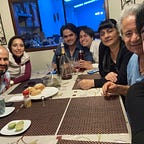Interface Low-Fi Element for Urban Go App
Pioneering can be hard, but if I go in, I wanna go in with a bang!
So I’m currently starting my journey into the world of UX/UI Design. As such, what’s most encouraging is the fact that you have to care for peoples’ needs in order to make this work.
That’s why I chose a public transportation tool to apply some of the Design Thinking strategies, such as interviews, evidence of the research conducted and, of course, my first low fidelity wireframes.
First come the interviews. We guerrilla chat with some random people, preferably users of Urban Go in order to find out their needs. Then, like a blast, you have tons of scrambled data waiting for you to get in in line, to form your troops for the upcoming brainstorm.
Brainstorming is important. Of course you have to go through thorough methods before coming up with solutions. This is a first effort, keep posted. You’ll surely be welcome and you’ll see just how far pioneering can actually go. ;)
After brainstorming, you can come up with some nice ideas just being empathetic to the user and actually caring for what they have to say. After a few ideas land and get defined, we can actually sketch something new and most likely, something useful. Spoiler alert: These are not eye-candy.
Naturally, iterations are a very important part of the process. They allow you to keep coming up with better solutions for users. It’s important to run as many paths as possible. Good things may come from repetition.
After taking Prototype A to a some nice interviewed people who left their contacts with me for further support, Protoype B comes in to improve Prototype’s A navigation system. It’s good to point out now that those greek characters you can see there help me to identify the name of each screen. It’s a work technique in case I have to mix some screens from different prototypes.
The third one was the good one. We simply display with some greek characters which of the screens from which models we’re going to use to draw our middle fidelity wireframes. It’s a really quick technique just to help your fellow doodler.
This first exercise based on the data collected from the interviews proved to be challenging, but reassuring of the fact that if you trust the process itself, it will shed the solution by itself in the end. Just care for people, listen to them, register everything that they say, organize it and brainstorm on it. I think that’s the gist of it and the most important thing for this first project is to get the gist of it.
Hopefully I can help other newbies with this and come back to this first project in the future.
